| How-To - Wheels and Tires
Trends come and go within our hobby, but there are a few things that stand the test of time. While many hot rodders have changed their opinion about stance, color combinations, and interior fabrics over the years, we've noticed that wide whitewall tires have remained a popular alternative to generic black sidewall tires. There is no question that tire and wheel styles have evolved over the years, but we're going to take a look at the history of whitewall tires and how it has influenced the hot rod community.
Before we concentrate solely on hot rods, let's take a look at whitewall history in the automobile manufacturing world. Originally, tires were off-white in color, due to the color of the natural rubber formula. Tire manufacturers then added zinc oxide to the formula, which gave the tires a brighter white appearance. White tires were not a status symbol or aesthetic feature—it was just how the tires were produced.
The tires would quickly turn to a beige color as they traversed the dirt roads of yesteryear.
It wasn't until 1910 that BFGoodrich started adding carbon black to its tires, as this ingredient added strength and durability to the rubber. Soon, most new cars rolled out of the factory on black tires, as this updated chemistry resulted in a stronger tire. Since adding carbon black to the rubber was an additional production cost, some tire companies added it only to the tread surface. This resulted in the first tire with a white sidewall quite by accident. The whitewall would later be refined, and it eventually transitioned to a strip of white rubber being added to the tire's all-black carcass during the manufacturing process.
Though the whitewall tire was not originally a fashion statement, this look caught on quickly and became an affordable upgrade to most passenger cars. New car buyers could elect to spend a few extra bucks and have their car equipped with wide whitewalls; this appearance package was popular for quite some time.
As tire and wheel size evolved through the years, the diameter shrank, while the widths grew slightly. And by the end of the '50s, most American cars were rolling on 14x5 wheels, with the option to upgrade to tires with a 2.5-inch whitewall. In 1962, a major transition happened, as wide whitewalls were phased out of most regular car options, being replaced with 1-inch whitewalls. These too, would eventually shrink to 7/8-, 3/4-, 5/8-inch, and so on, until the whitewall all but disappeared.
Certain makes and models kept the whitewall tire alive as an option, but this change in original equipment came at a time when aftermarket tire manufacturers were experimenting with new styles and designs. By 1970, the raised white letter tire took a stronghold in the muscle car community, and the sporty looks naturally fit the bill for modified cars of the era. This was also a transitional time for tire companies, as the switch from bias-ply to radial was happening across the country.
Hot Rod Tires
If you weren't around for those initial days of hot rodding, we can simplify the hobby by breaking down '40s and '50s hot rods in two very basic categories: race-inspired hot rods and customized show cars. The race-inspired cars typically used blackwall tires, which were often passenger car tires modified for racing or purpose-built race tires. On the other hand, customized show cars had a much more glamorous appearance with slick paint and chrome plating, so wide whitewalls were a natural extension of that high-end styling. These two basic categories have blended and crossed over many times since the inception of the hobby. These days, there is always a battle of blackwall versus whitewall tires when it comes to traditional hot rods, but it started as a matter of preference, and that's where we'll leave it.
Early hot rods and customs often used a different tire size to accentuate the car's features—smaller tires would effectively lower the car's ride height, while larger tires would fill the wheel openings. It was up to the owner to choose the appropriate tire size for their vehicle, and of course, this created the big 'n' little craze that is still relevant today. You could find a pair of tires from a Cadillac for the rear and match them up with a pair of tires from an Austin or some other compact car for the front. It wasn't quite as simple as thumbing through a catalog to pick out your desired sizes, but it led to some creative combinations.
It was up to the owner to choose the appropriate tire size for their vehicle, and of course, this created the big 'n' little craze that is still relevant today. You could find a pair of tires from a Cadillac for the rear and match them up with a pair of tires from an Austin or some other compact car for the front. It wasn't quite as simple as thumbing through a catalog to pick out your desired sizes, but it led to some creative combinations.
As tire manufacturers discontinued wide whitewall tires in the '60s, the molds were often sold to foreign manufacturers, or simply placed in storage. Enter Corky Coker, a young man from Tennessee who jumped into his father's tire business with a huge goal in mind. He went after those discontinued molds, hoping that someday he could put them back into production, in an effort to serve the automotive restoration market. What he didn't realize was that his efforts would eventually create an industry all its own and reach customers in the hot rod marketplace.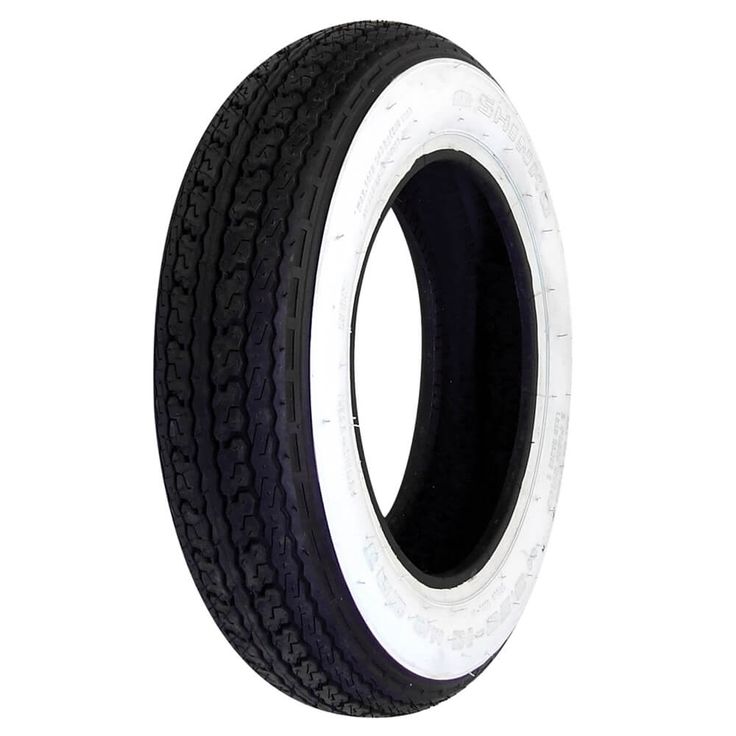
During the '70s and '80s, Coker Tire originally catered to the bone-stock restoration crowd. The tire market changed drastically when Coker Tire introduced the world's first wide whitewall radial tire in 1994, as it was a turning point for classic cars, hot rods, and customs. This was a tire that offered the old-school sidewall with modern radial construction, and it really put Coker on the map. The tire featured a true whitewall radial construction, which required a revised mold and several additional steps in the tire building process, compared to regular blackwall passenger car tires.
The new tire availability in 1994 encouraged hot rodders and custom builders to use wide whitewall tires, and Coker Tire continued to reach the market with custom sizing and additional brands. Of course, Coker Tire still offers the authentic Firestone, BFGoodrich, and other bias-ply tires, but the radial whitewall tire market helped car enthusiasts get the nostalgic look without the finicky handling characteristics of a bias-ply tire. It was a big breakthrough and part of the reason you see so many hot rods and customs with wide whitewalls to this day.
It was a big breakthrough and part of the reason you see so many hot rods and customs with wide whitewalls to this day.
Coker Tire hit another milestone in 2013 with the introduction of the American Classic "bias look" radial tire. This tire is built to replicate the narrow tread design and piecrust shoulder of vintage bias-ply tires, but offer the ride quality, safety, and tread life of a modern radial. Even with all of the advancements and various brands, the folks at Coker Tire tell us that the original Coker Classic wide whitewall radial is still one of its best-selling tires.
The process that Coker Tire employs is lengthy and expensive, and the development process starts with a series of drawings and a specific mold for each tire size, style, and brand. The mold is typically made of steel or aluminum, and they are very heavy and highly resistant to wear and tear. The tire mold is one of the final processes of the assembly line, but it's what gives the tire its shape and design features.
Manufacturing starts with a little bit of chemistry, as the rubber compound is developed from natural and synthetic rubber, as well as various chemicals and curing agents. This rubber mixture is formed into sheets, which are 40 inches wide and 3/8-inch thick. The sheets are then sent to a calendar, which is a piece of machinery that applies the rubber to polyester fabric to create the ply layers. By squeezing the rubber sheet and a layer of fabric between steel rollers, the tire technicians can determine the final thickness of the material. The sheet then goes to a cutter, which allows the operator to precisely cut it to the desired length, width, and angle before it is rolled into a liner and sent to the tire-building machine.
As the trimmed sheet of rubber moves down the assembly line, its final destination is the tire-building drum, where the first form of assembly can be performed. The number of rubber sheets used determines the tire's load rating, and the majority of passenger car tires feature a four-ply construction. In the early years of tire manufacturing, cotton was used in the ply sheets, but it is now common to use polyester cord material.
In the early years of tire manufacturing, cotton was used in the ply sheets, but it is now common to use polyester cord material.
Bundles of steel wire are placed in a bead former, which coats each strand of wire with rubber, so it will adhere to the rest of the tire. This creates a bead bundle and the number of wire strands is dependent on the size and load range of the tire. The bead bundles are placed on either end of the tire-building drum, where the ply edges are turned up around the bead bundle and locked into place. After the beads are installed on the tire carcass, a strip of white rubber is cut to the appropriate length and placed on the sidewall area. Once the carcass is complete, this is called a "Green Tire."
The Green Tire is then loaded into a specific mold, which rests inside of a curing press. The mold determines the tire's size, tread pattern, sidewall details, brand names, and DOT information. Each mold features a curing bladder, which is inflated by steam and pushes the hot rubber out into the mold details. During the curing process, the rubber reaches 360 degrees F.
During the curing process, the rubber reaches 360 degrees F.
When the curing process is complete, the tire still needs some more work to reach completion. The tire is inflated on a special wheel and allowed to cool, and then sent to its final inspection area. When the tire passes inspection, it continues its path to the cleaning and inspection area. A special attachment, based on the whitewall width, lightly cleans the sidewall of the tire so that the whitewall is clean and white. It is then protected with a blue coating that keeps the whitewall from being damaged in transit, before being wrapped in plastic and sent into the warehouse for shipping.
By this lengthy process, you can easily surmise that Coker Tire's process is labor-intensive and it's not quite as automated as one might think. Handcrafted, genuine whitewall tires might cost a few bucks more than your average tire, but true whitewalls are anything but average tires.
Imitation Whitewalls
Dating back to the early days of hot rodding, the hobby consisted of low-budget, grassroots guys who cut, stitched, and handmade parts to customize their car.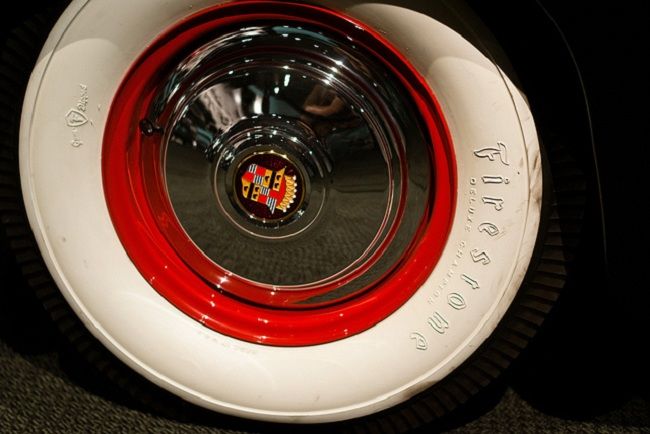 Even though wide whitewall tires were available at the time, many hot rodders couldn't afford them, so they resorted to imitation whitewalls.
Even though wide whitewall tires were available at the time, many hot rodders couldn't afford them, so they resorted to imitation whitewalls.
Originally, you had a couple choices for imitation whitewall tires. You could paint the sidewalls white if you were a high school kid on a paper route budget. If you had a couple more dollars to spend, you could buy a set of portawalls, which are whitewall inserts that rest between the rim and the tire bead. Portawalls give the appearance of a whitewall tire from a distance, but you can typically see that it's not actually part of the tire at close inspection.
Tire customizing has been around for a long time, and it's not something we'd suggest if you plan on driving your car. Modern-day tire customizers are a little more sophisticated, but the companies that offer imitation whitewalls still don't have the tried-and-true construction that stands the test of time. Their method involves taking an existing blackwall tire and adding a whitewall to it by grinding the sidewall down and bonding a strip of white rubber to the tire.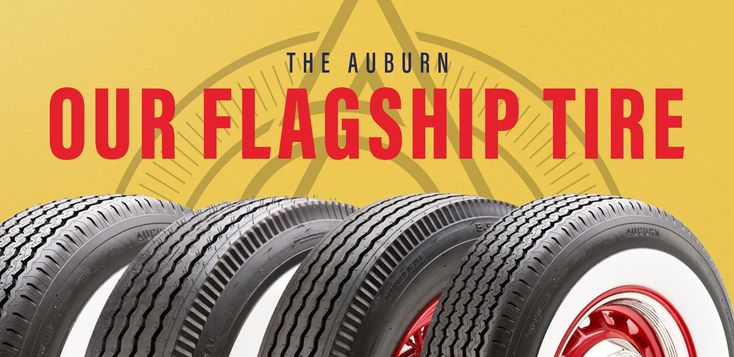 This is a very similar process to the old days of re-capping tires, but it involves the sidewall instead of the tread. The major hazards with recapping or any tire modification include unnecessary and extraordinary heat cycles, as well as reduced material thickness. If you have a sidewall puncture, even on your daily driver, the tire is typically deemed unfixable, so the idea of grinding on the sidewall to apply an imitation whitewall isn't exactly confidence inspiring.
This is a very similar process to the old days of re-capping tires, but it involves the sidewall instead of the tread. The major hazards with recapping or any tire modification include unnecessary and extraordinary heat cycles, as well as reduced material thickness. If you have a sidewall puncture, even on your daily driver, the tire is typically deemed unfixable, so the idea of grinding on the sidewall to apply an imitation whitewall isn't exactly confidence inspiring.
Other forms of imitation whitewalls include decals, which is a modern type of portawall. Tire stickers are a common modification for enthusiasts who want the sporty looks of a white letter tire, but these companies are starting to jump on the whitewall bandwagon. While this method may be cheap, it's not permanent and it certainly doesn't look as good as a true whitewall tire.
Today's do-it-yourself imitation whitewall involves grinding the sidewall of a white letter tire. Any white letter tire has a strip of white rubber, just like a whitewall, so grinding the black rubber reveals the layer of white rubber beneath. Taking a grinder to your tire's sidewall is certainly the sketchiest way to get the whitewall look, so take your safety into consideration and avoid this method.
Any white letter tire has a strip of white rubber, just like a whitewall, so grinding the black rubber reveals the layer of white rubber beneath. Taking a grinder to your tire's sidewall is certainly the sketchiest way to get the whitewall look, so take your safety into consideration and avoid this method.
It's easy to see why various types of imitation whitewalls have come and gone. None of the methods are comparable to manufacturing a tire with a whitewall from day one. Sure, there may be a price difference, but when it comes to safety, durability, and good looks, it's hard to argue with the advantages and long-standing heritage of a real whitewall tire.
All-white tires were not a sign of wealth or luxury in the early days of the automobile. Tires were originally a beige color, until manufacturers started adding zinc oxide to the formula to provide a bright white appearance.In 1910, BFGoodrich was the first company to utilize carbon black in its rubber formula.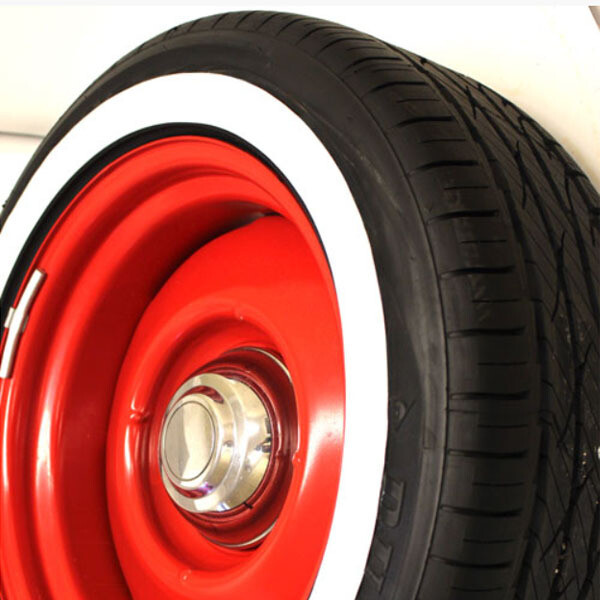 This ingredient added strength to the rubber, but it also changed the rubber's color to black. Shown is the Goodrich Silvertown Cord high-pressure tire, a common tire from around 1910 through the '20s.As the years went on, tires and wheels evolved, and whitewalls became a form of decoration, especially for American automobiles. By the '30s, it was a factory option on many cars, and by the '50s tires like this Firestone 6.70-15 was commonplace in the automotive market.The hot rod world utilized whitewall tires very early on, but they were typically used on customized show cars, rather than race-inspired hot rods. This highly customized roadster pickup, photographed in 1955, sports a set of wide whitewalls. Our best guess is that the owner upsized to approximately 7.00-16 to get a distinct look.Many early hot rods used blackwall tires, like the ones on this bare-bones 1932 Ford roadster. The combination offers a sinister look, especially with the black steel wheels.In comparison to the black-on-black highboy, this very similarly prepared Deuce roadster has a more flashy appearance, with bright red paint, beige steelies, and wide whitewalls.
This ingredient added strength to the rubber, but it also changed the rubber's color to black. Shown is the Goodrich Silvertown Cord high-pressure tire, a common tire from around 1910 through the '20s.As the years went on, tires and wheels evolved, and whitewalls became a form of decoration, especially for American automobiles. By the '30s, it was a factory option on many cars, and by the '50s tires like this Firestone 6.70-15 was commonplace in the automotive market.The hot rod world utilized whitewall tires very early on, but they were typically used on customized show cars, rather than race-inspired hot rods. This highly customized roadster pickup, photographed in 1955, sports a set of wide whitewalls. Our best guess is that the owner upsized to approximately 7.00-16 to get a distinct look.Many early hot rods used blackwall tires, like the ones on this bare-bones 1932 Ford roadster. The combination offers a sinister look, especially with the black steel wheels.In comparison to the black-on-black highboy, this very similarly prepared Deuce roadster has a more flashy appearance, with bright red paint, beige steelies, and wide whitewalls.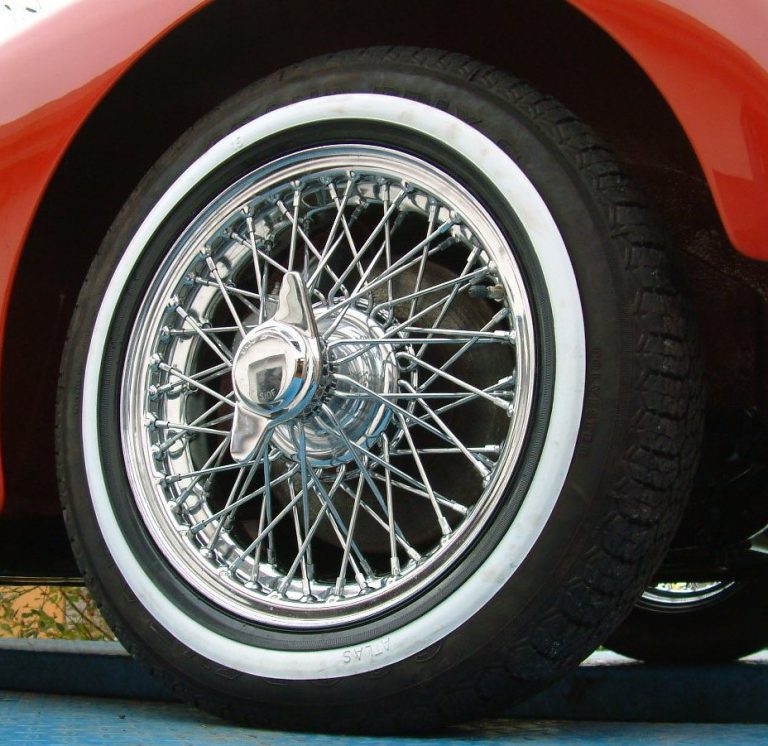 It certainly offers a drastic difference, and it was a common combination in the '50s.Even though wide whitewalls were phased out of regular tire production in the '60s Coker Tire filled the void in the market. In 1994, Coker Tire debuted the world's first wide whitewall radial tire, which encouraged hot rodders to go back to the nostalgia look of wide whites.In 2013, Coker Tire made another big leap in the whitewall tire market with the introduction of the first "bias look" radial tire. The American Classic features the looks of a vintage bias-ply tire with the ride quality of a modern radial. This is a genuine whitewall tire and it's perfect for traditional hot rods and customs.Manufacturing a tire is a labor-intensive process, and it's not quite as automated as you might think. After the chemists develop a formula for the rubber compound, the materials are formed into rubber sheets, which contain ply cord material.Rubber sheets are wrapped around a tire-building drum and mated with one another until the appropriate number of layers are in place.
It certainly offers a drastic difference, and it was a common combination in the '50s.Even though wide whitewalls were phased out of regular tire production in the '60s Coker Tire filled the void in the market. In 1994, Coker Tire debuted the world's first wide whitewall radial tire, which encouraged hot rodders to go back to the nostalgia look of wide whites.In 2013, Coker Tire made another big leap in the whitewall tire market with the introduction of the first "bias look" radial tire. The American Classic features the looks of a vintage bias-ply tire with the ride quality of a modern radial. This is a genuine whitewall tire and it's perfect for traditional hot rods and customs.Manufacturing a tire is a labor-intensive process, and it's not quite as automated as you might think. After the chemists develop a formula for the rubber compound, the materials are formed into rubber sheets, which contain ply cord material.Rubber sheets are wrapped around a tire-building drum and mated with one another until the appropriate number of layers are in place.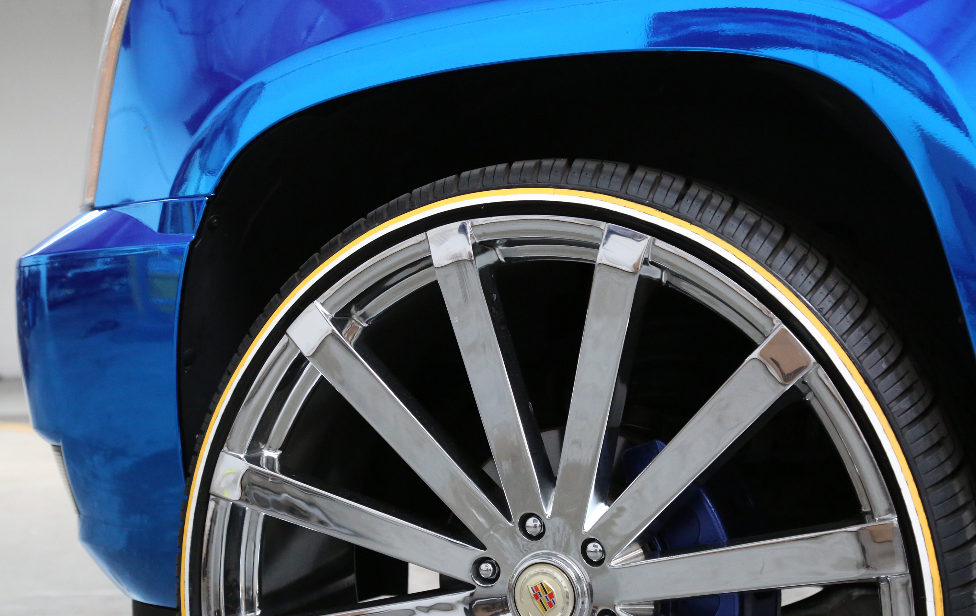 This number of layers is determined by the tire's load rating. Then, the white rubber is installed on the sidewall area of the carcass, and the rubber coated steel bead bundles can be added.The carcass slides over a bladder, which fills with steam and pushes the rubber into the mold reveals. This gives the tires its shape, size, and distinct lettering. An easy way to tell a genuine whitewall tire from an imitation whitewall is to look at the sidewall—if it doesn't have a brand name, siz, or DOT number on the sidewall, it's not the real thing!As the bladder fills, it begins pushing the drum-like tire carcass out as the mold closes and heats the rubber to 350 degrees F. The heating process brings the layers of rubber together, and ensures that the white rubber is a permanent part of the tire.After the molding and curing process, the tire is removed from the mold and sent to the cleaning and inspection area. The tires are inflated on a special wheel and the whitewall is cleaned of any debris created from the manufacturing process.
This number of layers is determined by the tire's load rating. Then, the white rubber is installed on the sidewall area of the carcass, and the rubber coated steel bead bundles can be added.The carcass slides over a bladder, which fills with steam and pushes the rubber into the mold reveals. This gives the tires its shape, size, and distinct lettering. An easy way to tell a genuine whitewall tire from an imitation whitewall is to look at the sidewall—if it doesn't have a brand name, siz, or DOT number on the sidewall, it's not the real thing!As the bladder fills, it begins pushing the drum-like tire carcass out as the mold closes and heats the rubber to 350 degrees F. The heating process brings the layers of rubber together, and ensures that the white rubber is a permanent part of the tire.After the molding and curing process, the tire is removed from the mold and sent to the cleaning and inspection area. The tires are inflated on a special wheel and the whitewall is cleaned of any debris created from the manufacturing process.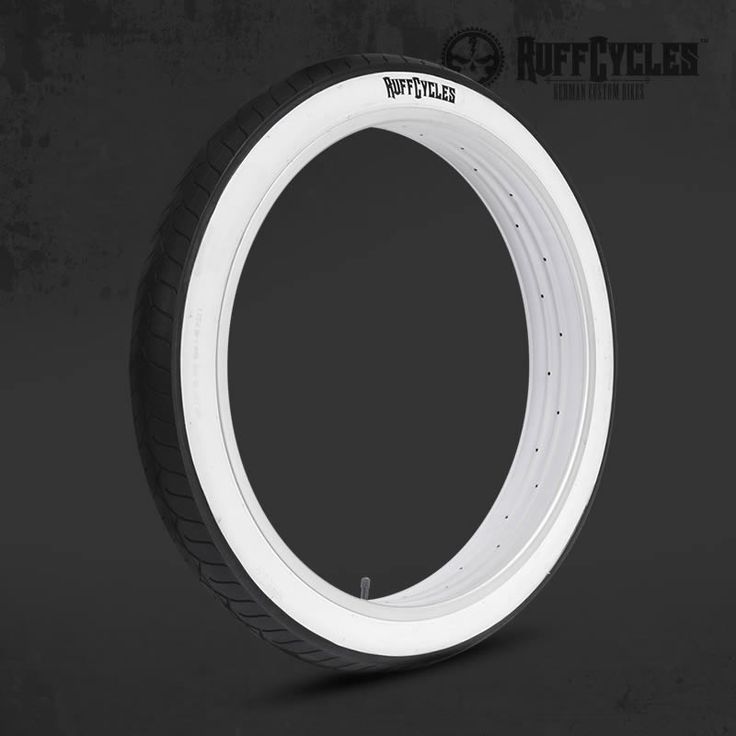 The end result of the Coker Tire's whitewall tire manufacturing process is a tire that you can install and trust for many years. This 1955 Chevrolet mild custom sits on a set of Coker Classic bias-ply whitewall tires, and it looks like it just rolled out of a custom shop in the '60s.
The end result of the Coker Tire's whitewall tire manufacturing process is a tire that you can install and trust for many years. This 1955 Chevrolet mild custom sits on a set of Coker Classic bias-ply whitewall tires, and it looks like it just rolled out of a custom shop in the '60s.There's something about whitewall tyres that instantly invoke a feeling of nostalgia, taking you back to the 1950s when rock and roll was exciting and new.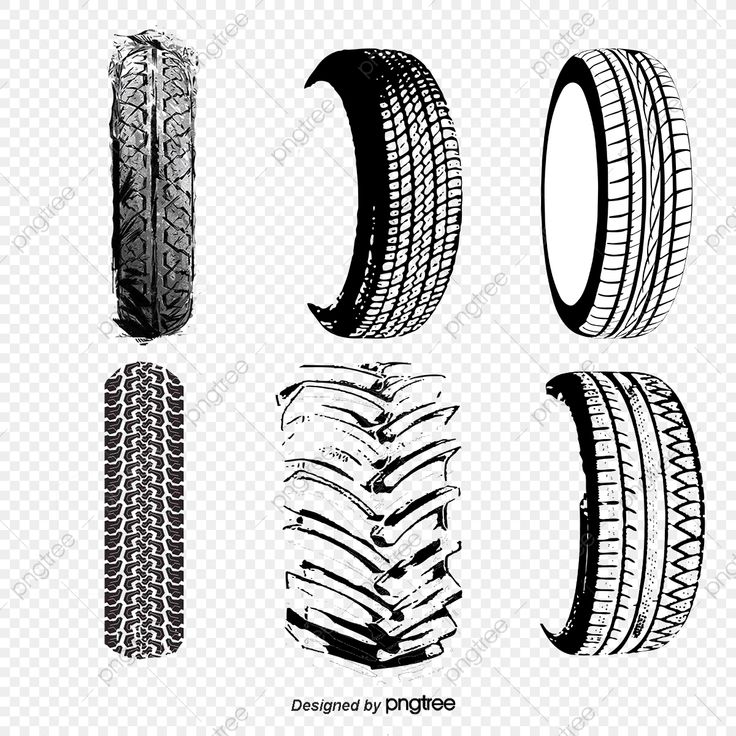 Fast forward to today, and the signature circles of white paint around the sidewall still go well with vintage cars and motorcycles, but they also look right at home on modern-day rides, instantly giving them classic, old-timey vibes.
Fast forward to today, and the signature circles of white paint around the sidewall still go well with vintage cars and motorcycles, but they also look right at home on modern-day rides, instantly giving them classic, old-timey vibes.
You can only get these tyres through customization, which can set you back by several hundreds of dollars. But the good news is that you can follow our whitewall tyre hack, which only takes a few hours!
But first, learn how this eye-catching tyre design came to be, how it caught on, and why it slowly faded from the market.
A Brief Timeline of Whitewall Tyres
But even if whitewall tyres are no longer in mass production, we still see them from time to time. Why? Some tyre makers sell them to a niche market, while others offer whitewall customization. Vintage lovers now have a choice between the classic thick white stripes of yesteryears or the thinner white circles that give cars an old-fashioned touch.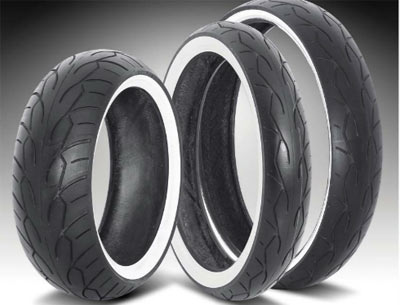
If you want whitewall tyres, you can also try doing them yourself! Read our step-by-step DIY that's as fun as it is fulfilling.
How to Do Your Whitewall Tyres
To start doing your whitewall tyres, prepare this checklist:
Ready with all the things you need? Follow these 7 steps to do your whitewall tyres:
1. Clean your tyres.Clean tyres make the paint and primer stick better on the rubber. Do this in a shaded area to keep you and the tyres cool. After thoroughly hosing the tyres down, preferably with a high-pressure washer, apply a cleaning solution. Use a bristle brush or scrubbing pad to remove dirt and grime. Rinse thoroughly, then dry them out with a clean microfiber cloth. Want more cleaning tips? Read our step-by-step guide to cleaning your tyres safely and efficiently.
💡Pro-tip: To make your tyre cleanser, mix a capful of dishwashing liquid in a bucket of water. Cleaning your tyres promotes longer tread life and ensures their grip.
Cleaning your tyres promotes longer tread life and ensures their grip.
2. Remove the tyres.
After taking off the hubcap, loosen the nuts with your lug wrench. Put the jack under your car to raise its bottom. To stabilise the jack, put a jack stand or a piece of wood beneath it. Now, you can remove the lug nuts with your hand and remove the tyre.
3. Place masking tape.Lay the tyre on a flat surface covered with cloth or cardboard. Using masking tape, cover the edge of the tread. To shield the wheel from paint, tape cardboard over it. Keep the masking tape smooth and tight on the protected areas so that paint won't seep under it.
4. Start with a primer.To ensure that the paint stays on the tyre, spray all-purpose and water-resistant primer on the rubber. Start from the top, working your way to the bottom. After covering the tyre, allow the primer to dry for about an hour before applying a second coat.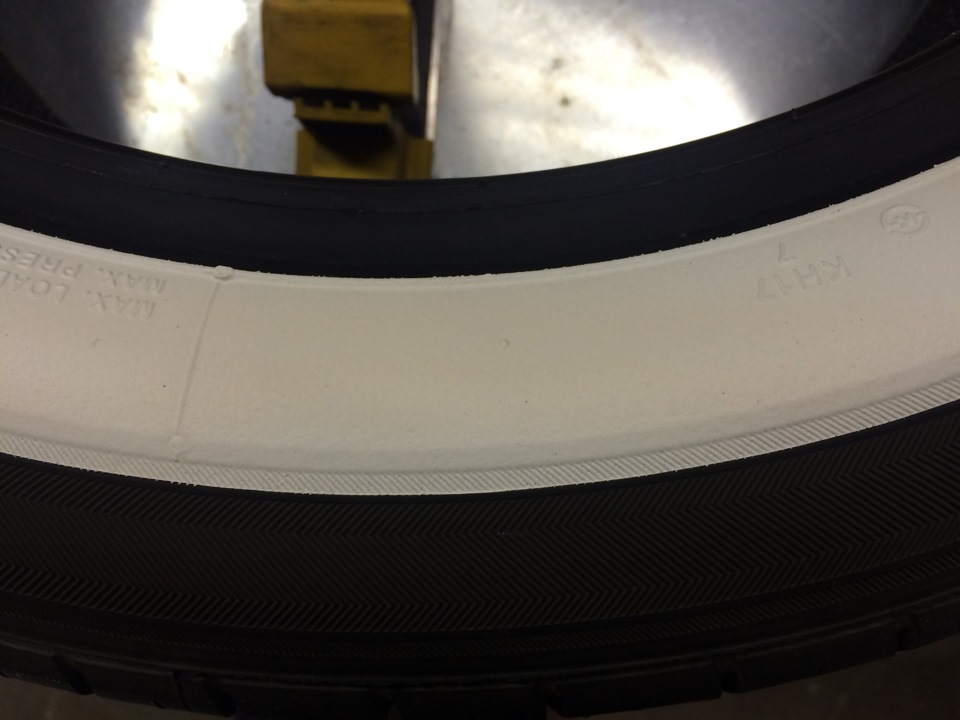
💡Pro-tip: It's best to apply three coats of primer to protect your tyres from discolouring.
5. Time to paint!
You can purchase whitewall paint online or in auto supplies stores. You can also use acrylic paint or spray-on white paint that sticks on smooth surfaces like plastic. Apply white paint on the exposed rubber and let it dry completely. While waiting, clean your paint brush by dipping it into turpentine. Once the first coat is dry, apply a second or third layer to keep the paint nice and even.
6. Apply a clear coat of paint.When the paint is completely dry, you can apply clear paint for added protection because sunlight can turn the white colour to yellow. When the coating is dry, remove the masking tape and bask in the glory of your new DIY whitewall tyres!
7. Maintain your whitewall tyres.Nothing lasts forever, including your DIY project.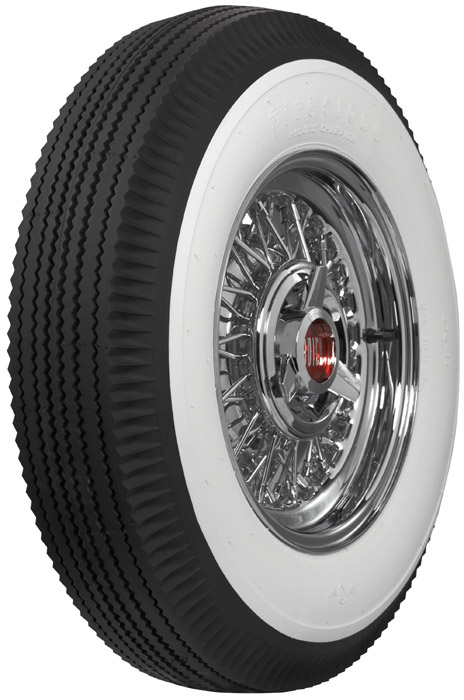 To maintain your whitewall tyres, clean them regularly. You can also put baking soda on a damp cloth, gently wiping it on your tyres before rinsing. Repeat the process until the white on your tyres pops. If some paint flakes off, use a white paint marker for a quick touch-up.
To maintain your whitewall tyres, clean them regularly. You can also put baking soda on a damp cloth, gently wiping it on your tyres before rinsing. Repeat the process until the white on your tyres pops. If some paint flakes off, use a white paint marker for a quick touch-up.
There you have it! No need to break the bank to get your vintage-inspired white wall tyres. Enjoy your cool ride, and share this article with anyone who wants to go down this fun DIY path.
Get Your New Tyres at the Lowest Prices!
With whitewall tyres, you enjoy the feel of classic cars minus the drawbacks and dangers of using old tyres. Ensure your tyres have sufficient tread to protect you from accidents and legal issues! Shop at Tyroola today for our wide range of tyre brands and sizes, plus wheels to keep your ride stylish and safe.
Shop at Tyroola today for the best prices and deals!
There are different ways to arrange "your" suburban area. Of great interest are the ideas of creating original items from old things that have served their intended purpose.
Of great interest are the ideas of creating original items from old things that have served their intended purpose.
Craftsmen make furniture from wooden pallets, polypropylene pipes, plastic and wine bottles. New applications are also found for old car tires. They make armchairs, tables, ottomans and even sofas. Practical and durable furniture is used in the garden, for arranging a garage, as an unusual accent in the interior.
Tires can be used uncoated, but more often they are dyed in bright colors, wrapped with jute, sisal, linen, cotton or hemp rope, and pulled with cloth.
Article content:
Car tire rubber contains toxic substances and should not be used in a child's room or in a poorly ventilated area. But even without this, there is enough space for improvement: in the living room of a private house, on the terrace, in the garage and utility room, in the open air.
But even without this, there is enough space for improvement: in the living room of a private house, on the terrace, in the garage and utility room, in the open air.
The simplest thing that can be made from used car tires is comfortable ottomans for relaxing and gathering with friends. They can be in the form of "pills" covered with a thick rope or with fabric upholstery on legs. Consider several manufacturing options.
First, the tire is cross-wrapped diagonally with a thick cord to block the through hole. Then completely cover the circumference. To do this, the rope is twisted in a spiral, starting from the center of the hole blocked by the cord. The rope is fastened with a glue gun.
Alternatively, 2 plywood discs of the appropriate diameter are used to close the holes in the center. They are attached with screws. Next, the structure is wrapped with a thick rope, fixing with hot glue.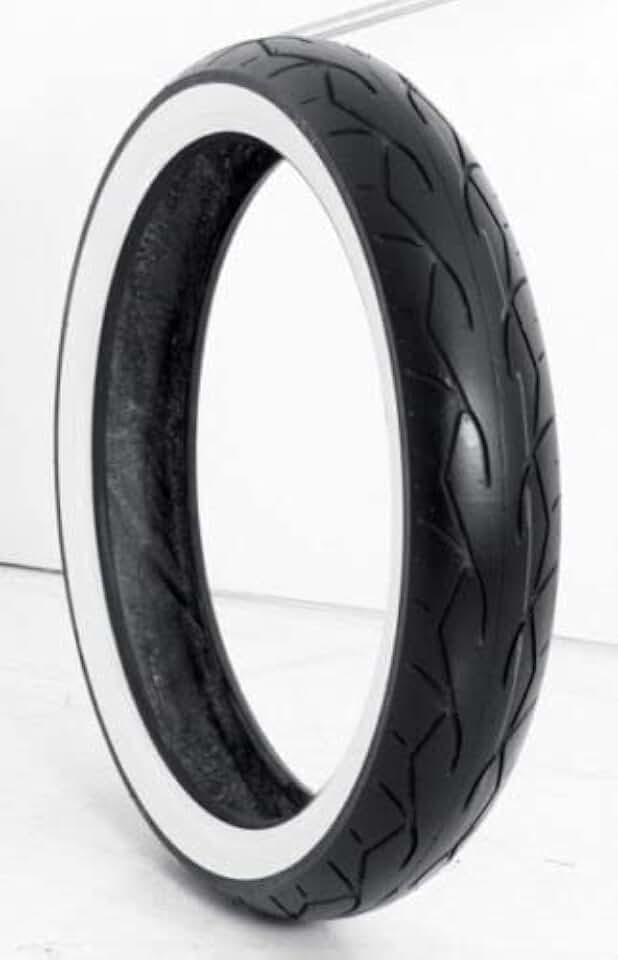
You can make a soft ottoman covered in fabric. To begin with, blanks are made from plywood sheet to close the holes. Then a foam strip is glued to the side of the tire around the entire circumference.
Using a screwdriver, screw the plywood disk from below. Next, they cover the tire with a dense cloth, fastening it with a construction stapler. Legs or wheels are screwed to the bottom plywood.
The remaining disk is wrapped with foam rubber and covered with fabric. The resulting cover is placed on top. It can be fixed with glue.
Several fabric-covered ottomans can be used as a cozy seating area.
Two rails are connected with bolts or screws from the inside. Next, the structure is painted or left as is.
A wooden circle made of MDF or chipboard is nailed on top, which is also painted, and soft bedding is laid. Also, a wooden circle can be covered with foam rubber and fabric.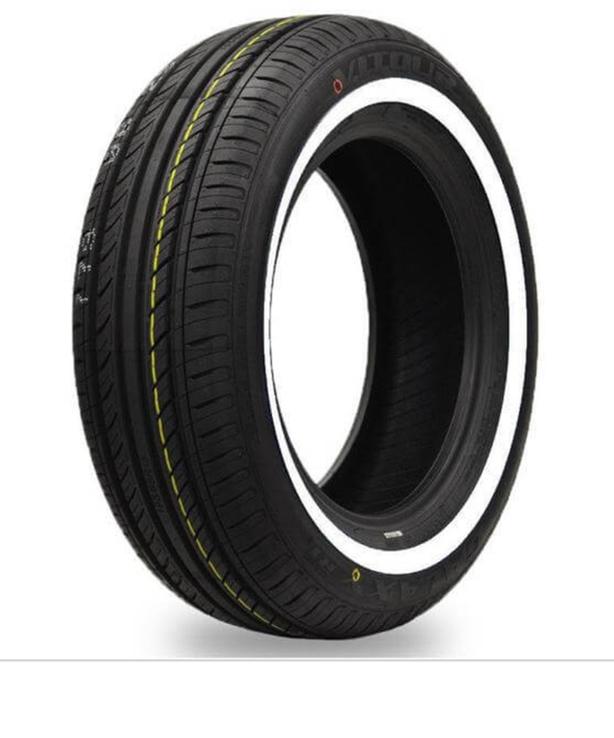
An excellent set will be obtained from high pouffes and a table. The table is made according to the same principle, only its height is twice as large. A casual white paint job while maintaining a contrasting black tread pattern gives the furniture a stylish look.
Small Tire Tires are wide and perfect for making designer craft boxes and storing small items. Their manufacture is similar to the creation of ottomans, only in addition to the outer skin, they also pay attention to the interior decoration.
For the interior, plain fabrics are used, and for the outer sheathing, bright fabrics with patterns and colors are used. Such cute interior items will be a good idea for a business.
Instead of simple pouffes, you can make chairs with a back and armrests. The backrest rail is also attached to bolts or self-tapping screws. Armrests can be made from strong, thick, varnished branches.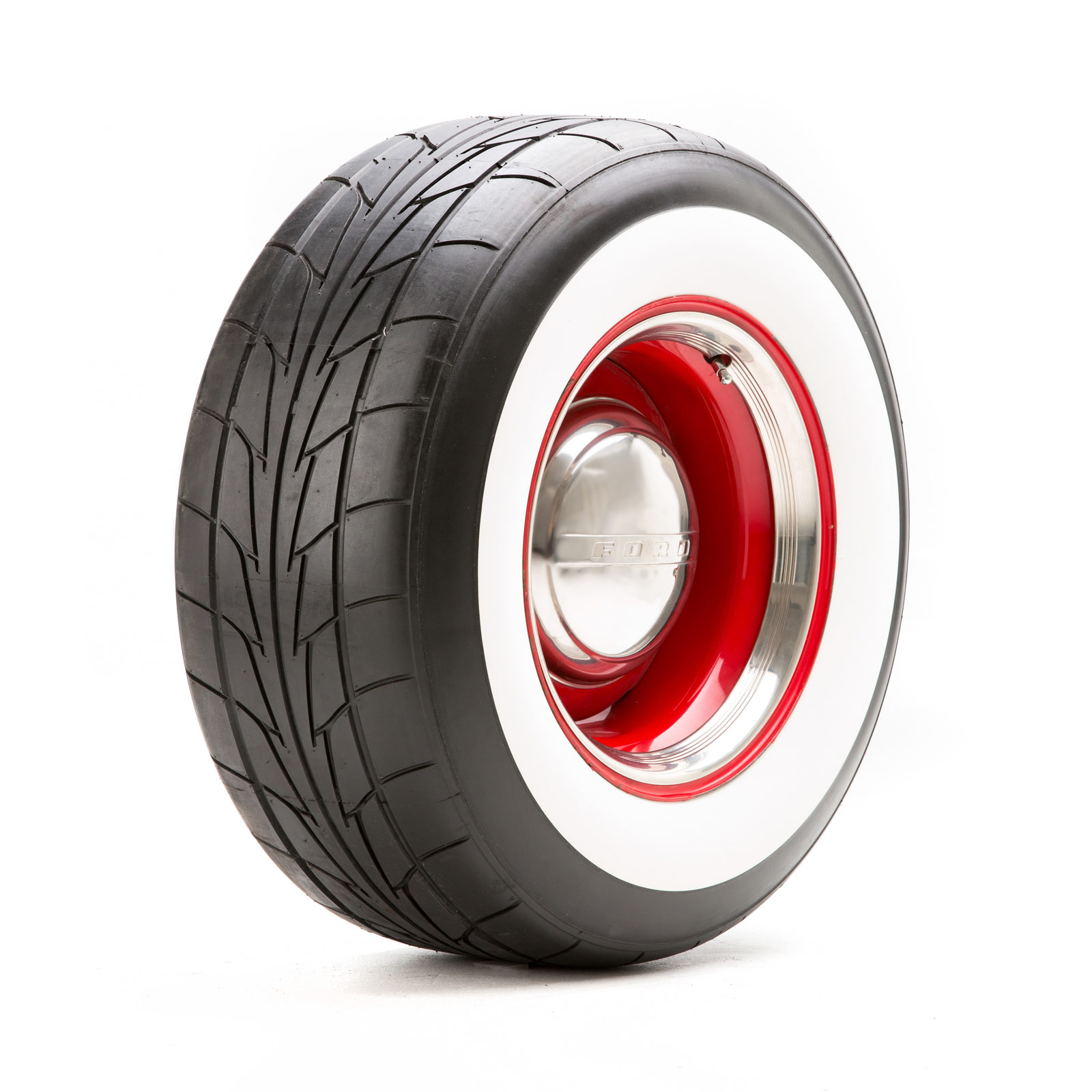 When the structure is assembled, proceed to close the holes in the center.
When the structure is assembled, proceed to close the holes in the center.
In addition to the methods already mentioned, weaving can be used. To do this, holes are made in a circle with a drill in increments of no more than 5 cm (more often). Later, a strong rope or cord is threaded through the holes with an awl, interlacing each longitudinal row with the transverse ones. You can experiment with the pattern, especially if you have weaving skills.
Bent steel tubes can be used as armrests. And for weaving instead of rope - soft wire.
Single chairs can be turned into a bench by connecting two sections with a common wooden frame.
You can make spectacular designer furniture from tires and improvised materials. Here are some proofs.
"Auto"-chair of 4 tires on a metal or wooden base. In the manufacture, the techniques already described above are used. All elements are connected with bolts.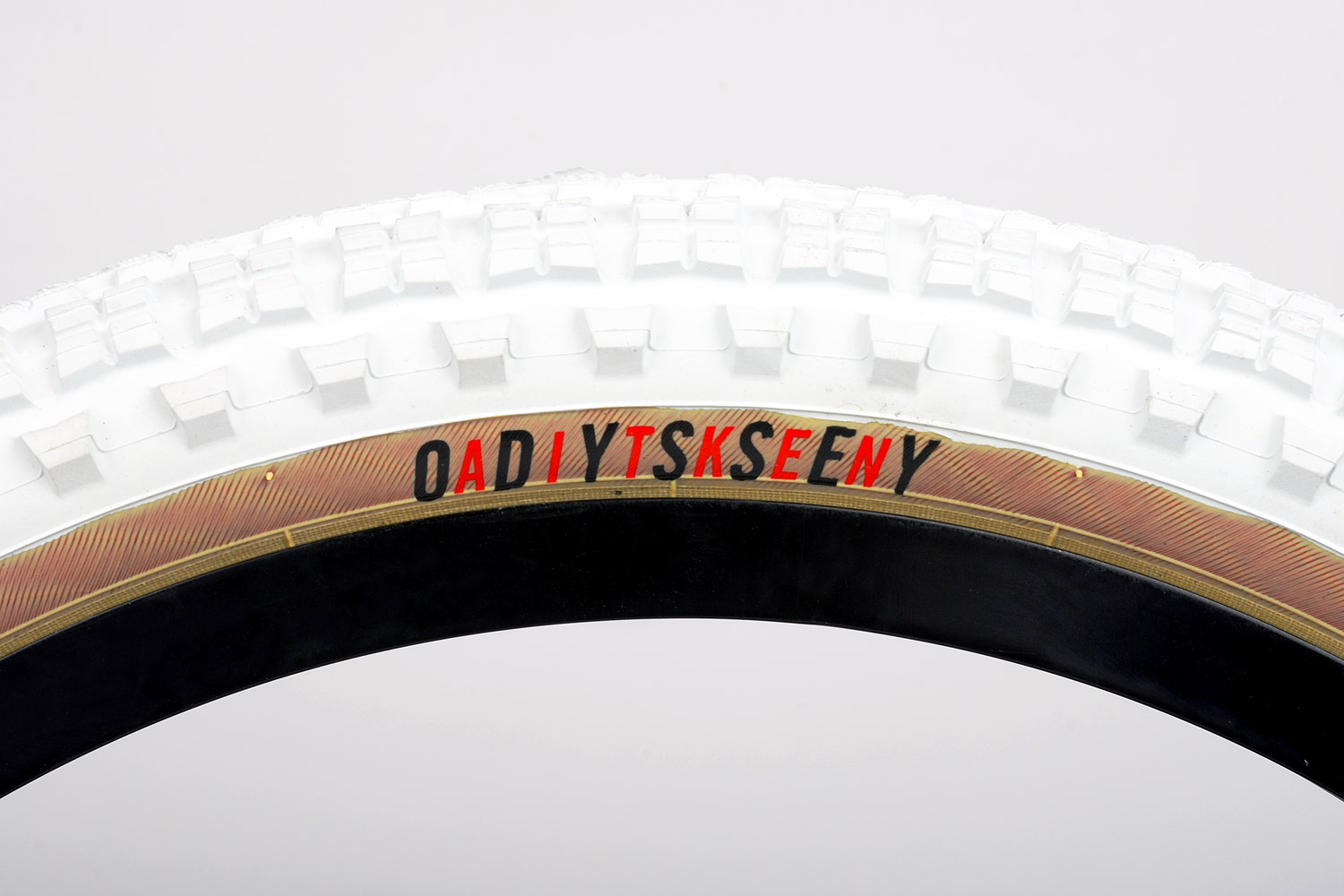
Low armchairs with upholstered backs in Art Nouveau style will fit perfectly into the interior of a spacious living room. For manufacturing, one tire is cut in half in diameter. This part will serve as the back.
A strip of thick foam rubber is glued inside. In order for the back to be beautifully raised, two slats-racks are nailed in the center.
For the seat, a wooden disk is cut out, sheathed with foam rubber. Then the entire foam rubber is covered with leatherette. Screw the back and seats and the chair is ready!
The next option is done in a similar way. Only for the back is taken a wide tire, which is attached closely, without rails.
For a chair with a high back, thick wooden slats will serve as a support, which are covered with a piece of foam rubber and covered with fabric. As a result, a brutal basis is not even guessed in the product. Everything looks elegant and stylish.
For the garden, an armchair with a wooden back is left unupholstered.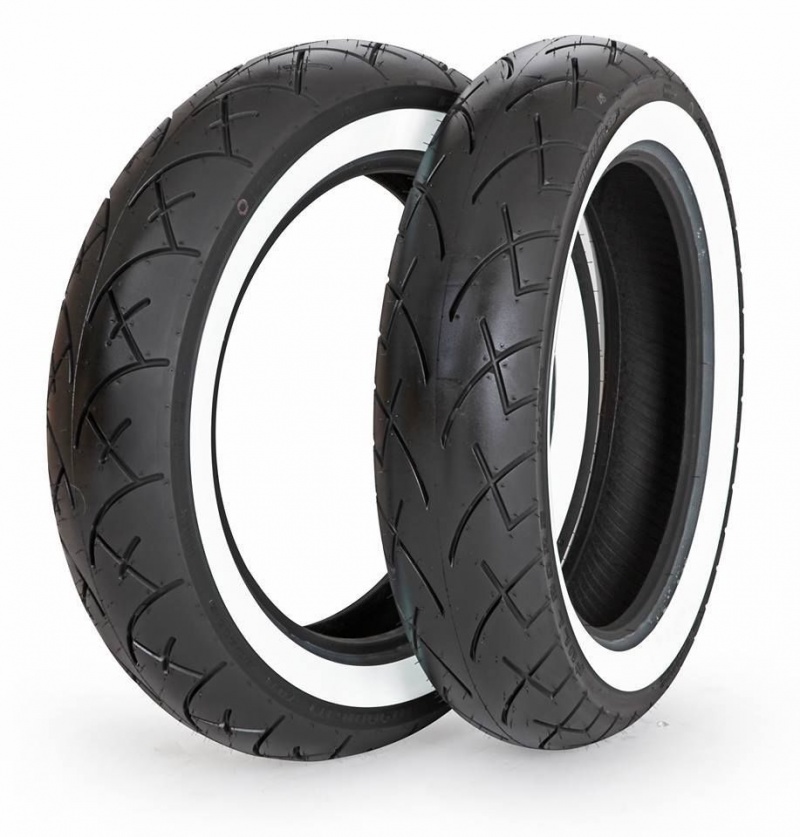 Even without painting, it looks very aesthetically pleasing.
Even without painting, it looks very aesthetically pleasing.
As a backrest, several tires connected together and placed on edge can be used. They can be attached to the tire serving as a seat using cables or elastic springs. Further tricks for converting waste material into a comfortable resting place can be suggested to you by fantasy or our good example.
Another interesting option for a chair for a private house made of a large tire. In this case, a segment is cut out in the tire, a soft seat is arranged below, and the inner walls are sheathed, and they serve as a back. A stylish combination of materials and a selection of trendy prints will allow you to get an excellent youth chair for watching TV.
Sofa requires car and mini truck tires. Solid tires are used for the base, and cut-off sectors for the back and sides.
Eco-leather or coarse wear-resistant fabric can be used as upholstery. Such a sofa can be placed in the garage or on the spacious terrace of a private house.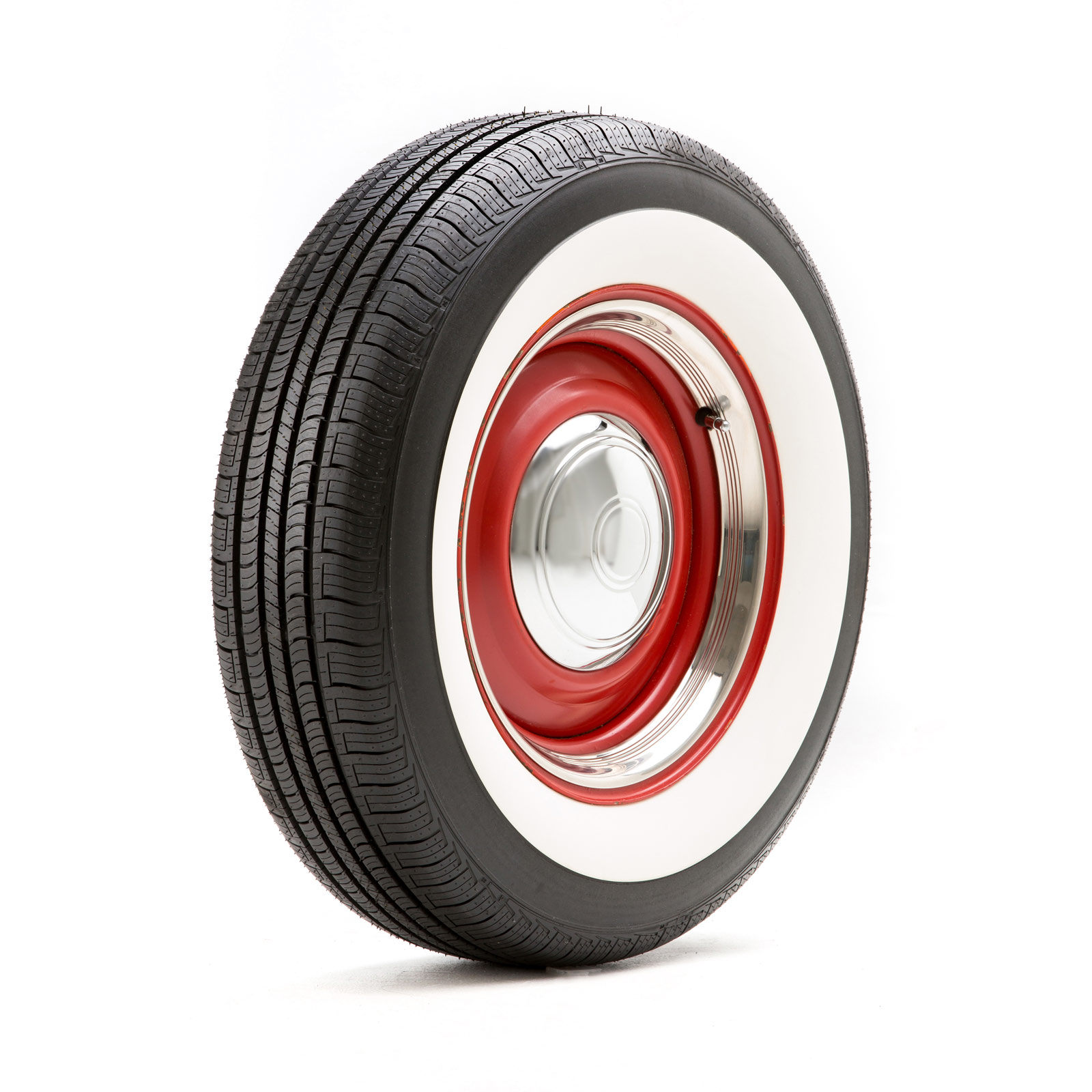
Tires are also used to create an unusual coffee table. There are many ideas: on wheels, with or without legs, with a glass or wooden surface, painted or natural.
Gold-plated version with chrome legs and glass top looks harmonious if it matches the color background of the interior.
With wood top and wenge legs, perfect for classic style. The legs are screwed to the lower wooden disk, and the table top is fixed with hot glue.
The rail can also be used as a round washbasin base. Thus, you can equip a bathroom in a private house or an open washstand in the country.
The selected ideas show the wide range of applications of car tires in the creation of original home and garden furniture. Having mastered the basic principles, you can develop your project and surprise with new ideas.
It is always nice to make something useful out of a junk item, and if the craft turns out to be beautiful as well, the pleasure is double. One example is tire crafts. They make decorations for a country or garden plot, various flowerpots and flower girls, build children's attractions and even make country furniture - tables and chairs.
One example is tire crafts. They make decorations for a country or garden plot, various flowerpots and flower girls, build children's attractions and even make country furniture - tables and chairs.
Let's start with the most, perhaps, simple flower beds and flower beds. Do you think it is difficult to make a multi-tiered one? Maybe, but not from tires. Take several pieces of different sizes, paint them in bright colors and fold them in a slide - one on top of the other. To prevent your slide from falling apart, fasten the tires from the inside with a screwdriver and self-tapping screws. Two per connection will suffice. Inside you fill up the soil, plant the plants. So that the soil does not spill out, you can lay the tire inside with a piece. It will remove excess water, but will not allow the earth to get enough sleep. A beautiful tiered flower garden is ready.
If you like regular flower beds, you can make these. For example, folding a flower bed in the form of a camomile out of tires. First, lay out and fasten the tires together in the lower tier. Fill the middle of the tires with earth, as well as the free space inside the circle. There, for better drainage, you can lay broken bricks or other construction debris, sprinkle a little earth on top and tamp. On the prepared surface, stepping back from the edge by more than half the diameter of the tire, lay out the second tier. They are also fastened together, the middle is covered with soil, and the core is erected on top. At the very top, you can plant tall flowers, and on the lower tiers - curb or undersized.
First, lay out and fasten the tires together in the lower tier. Fill the middle of the tires with earth, as well as the free space inside the circle. There, for better drainage, you can lay broken bricks or other construction debris, sprinkle a little earth on top and tamp. On the prepared surface, stepping back from the edge by more than half the diameter of the tire, lay out the second tier. They are also fastened together, the middle is covered with soil, and the core is erected on top. At the very top, you can plant tall flowers, and on the lower tiers - curb or undersized.
Another variant of a chamomile-shaped flowerbed of tires - in one tier. To do this, you will have to cut the tires.
In general, when making crafts from tires, they often need to be cut. This is far from easy. It is more or less easy to cut off the side surface from the tread. People with strong hands and good knives do it by hand. Good, by the way, training for the hands and the entire shoulder girdle.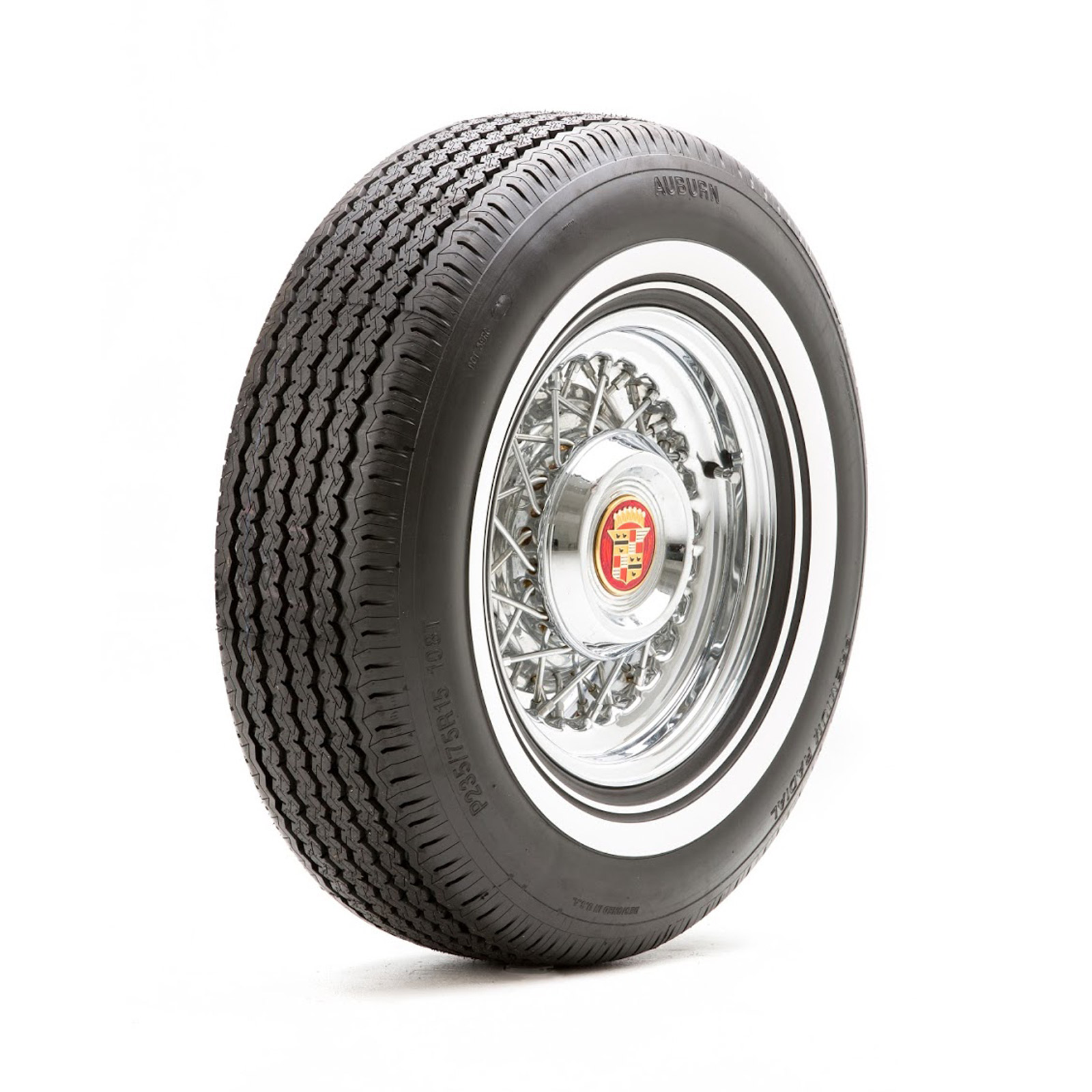 If you already cut with a knife, lubricate the blade with grease: rubber constantly “jams” the metal, and the blade coated with grease slips well.
If you already cut with a knife, lubricate the blade with grease: rubber constantly “jams” the metal, and the blade coated with grease slips well.
You can also cut off the sidewall with an electric jigsaw or grinder. Cutting with a grinder is relatively fast, but the stench is wild. Therefore, the grinder, even if there is one, only makes the first cut, so that you can introduce a jigsaw file. Further work with this tool. For cutting rubber, a blade with a reverse tooth made of good steel is taken.
If you have to cut the protector, it is useless to do it with a jigsaw or even a knife. At least with an ordinary knife. Blades made of special steel can even cut iron cord, but hardly anyone wants to disfigure such a tool on an old tire. Therefore, most often they work as a grinder. To avoid trouble, the protector is fixed: always think about safety. If the sidewalls are already cut off, the tread band is quite elastic and can be compressed with a clamp. Cut, it does not spring.
If you have a tire with an old rim, you can make a flowerpot with a stem out of it.
To do this, cut one sidewall along the tread. And they turn out. This is not an easy task: it requires considerable physical strength and perseverance. The rubber is elastic and it is impossible to turn it out the first time. If not at all, notches are made on the outside across the tread. They should be quite deep, but not through. It will also help if you make cuts along the edge with a depth of at least 5-7 centimeters. They will look like fringes on an inverted tire.
Why turn out? The inner surface is smoother, and the shape can turn out to be more interesting, especially if the edge is not linear, but jagged. You will get a gracefully bent decoration.
For details on how to turn a tire, see the video.
A tire without a rim can also be turned out in the same way. The sequence of actions is the same. First, one of the sidewalls is cut off - straight or in a zigzag. In order for the "petals" to be even, it is desirable to mark them. It is convenient to do this with chalk. According to the mark, they are then cut with an electric jigsaw or a knife (if the cord is synthetic).
The sequence of actions is the same. First, one of the sidewalls is cut off - straight or in a zigzag. In order for the "petals" to be even, it is desirable to mark them. It is convenient to do this with chalk. According to the mark, they are then cut with an electric jigsaw or a knife (if the cord is synthetic).
Turn out like this: step on the inside of the tire, take the edge with your hands and pull it up and towards you. It is important to achieve the first result: when at least some part is arched. If the tire looks like the photo below, this is already a success. It is developed by consistently turning the edge inside out and standing on the part that has already been turned out so that it does not turn back out.
Watch the process in the video again. This time, the tire is turned out without a wheel (by the way, they cut it with a knife).
Even by itself, such an inside-out tire looks good. If you paint it, it gets even better. If desired, they can be combined - different colors, sizes, installed in different ways: on a tire or on legs.
If desired, they can be combined - different colors, sizes, installed in different ways: on a tire or on legs.
A high flower bed always looks beautiful. Especially with ampelous plants. It can also be made from tires, and there are several possibilities. In the photo below, there are two ways to fix the cut tires at different levels. The first is to use stumps for this, to which flowerpots are attached with nails or self-tapping screws. The second is to use reinforcement - three or four rods, on which to put rubber. Having set the tier at the right level, it needs to be fixed; on metal, this can only be done with the help of clamps.
It is not always possible to put a flowerpot on the ground: some areas are so developed that it is problematic to allocate even one square meter. In this case, people came up with various hanging flowerpots, and also from old tires. Only a small part of the whole tire remains, so there is a lot of cutting ... please be patient. For example, you can make hanging planters in the form of a dolphin, parrot, rooster and other outlandish birds. For a few ideas, see photos.
For example, you can make hanging planters in the form of a dolphin, parrot, rooster and other outlandish birds. For a few ideas, see photos.
Tire planter - parrot, rooster and dolphin
All these tire crafts. Only a small part of them - the heads - are often made of dense foam. Having cut and polished the part of the desired shape, it is fixed with self-tapping screws smeared with glue (this is a secret, remember), and then painted. How to make a parrot from a tire, see the video.
Below are step-by-step photos showing the main stages of creating a table or ottoman from a tire. You will need two more circles of plywood or fiberboard of a suitable diameter, a hemp rope is used for finishing. Of the materials at hand, you will need glue and a glue gun, as well as varnish and a brush for applying it. To connect the circles with the tire, you will also need self-tapping screws - 8-10 pieces on each side.
Next, take a glue gun and heat up the glue, put it on the sidewall. If there is no such luxury in the household, take glue, which is in a larger tube, such as "liquid nails". It is easier to work with a mounting gun. Apply the strip on the sidewall, glue the hemp rope. Yes, all the way to the top.
If there is no such luxury in the household, take glue, which is in a larger tube, such as "liquid nails". It is easier to work with a mounting gun. Apply the strip on the sidewall, glue the hemp rope. Yes, all the way to the top.
Using the same technology, we decorate the cover of the table (ottoman). You need to start laying from the middle: apply glue, lay the rope.
Completion of work - applying varnish. We do slowly, soaking well. Here is what should be the result. If you made a table, you can put glass on top - a rope, even varnished, is not the best table cover, although beautiful ...
Variety can be achieved with a case. It can be sewn from a vending dense material.
Cute ottoman…
Can be knitted - large knitting looks interesting.
Knitted cover in coarse knit - interesting look
If you do not feel like sewing and knitting, you can use old knitwear cut into strips. They are cut into long strips 3-5 cm thick, wound into balls and then wrapped around an ottoman. It turns out interesting, especially if several colors are combined.
It turns out interesting, especially if several colors are combined.
If you need a taller ottoman, twist the two tires together with self-tapping screws, and work with them in this form.
Another option, see video
There are different ways to equip "your" suburban area. Of great interest are the ideas of creating original items from old things that have served their intended purpose.
Craftsmen make furniture from wooden pallets, polypropylene pipes, plastic and wine bottles. New applications are also found for old car tires. They make armchairs, tables, ottomans and even sofas. Practical and durable furniture is used in the garden, for arranging a garage, as an unusual accent in the interior.
Tires can be used uncoated, but more often they are dyed in bright colors, wrapped with jute, sisal, linen, cotton or hemp rope, and pulled with cloth.
Car tire rubber contains toxic substances and should not be used in a child's room or in a poorly ventilated area.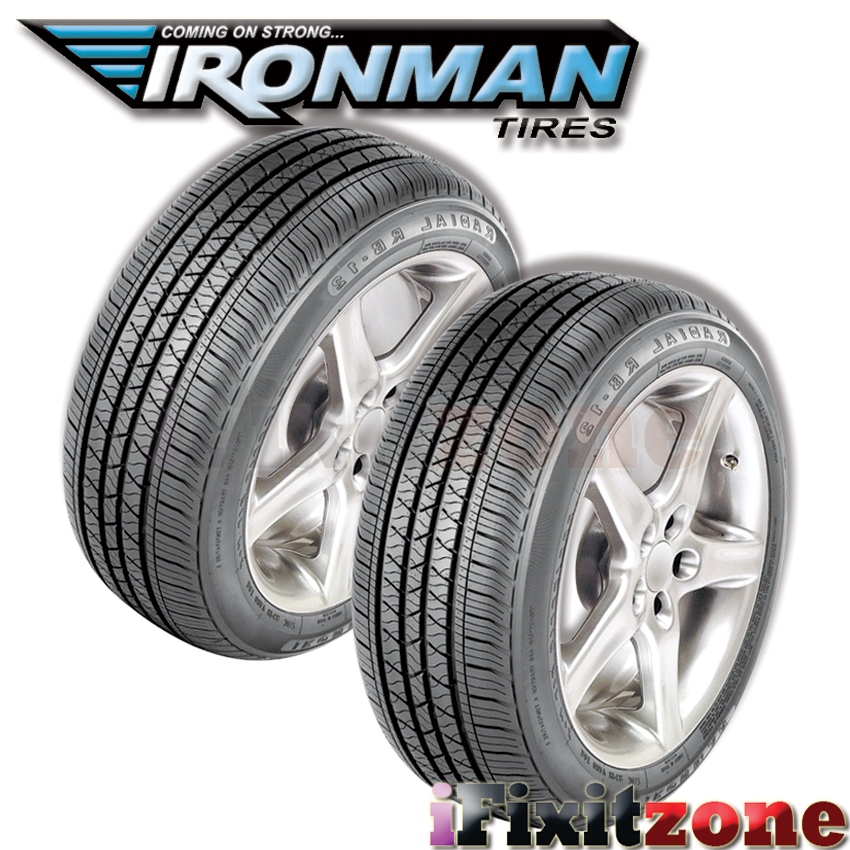 But even without this, there is enough space for improvement: in the living room of a private house, on the terrace, in the garage and utility room, in the open air.
But even without this, there is enough space for improvement: in the living room of a private house, on the terrace, in the garage and utility room, in the open air.
The simplest thing that can be made from used car tires is comfortable ottomans for relaxing and gatherings with friends. They can be in the form of "pills" covered with a thick rope or with fabric upholstery on legs. Consider several manufacturing options.
First, the tire is cross-wrapped with a thick cord diagonally to block the through hole. Then completely cover the circumference. To do this, the rope is twisted in a spiral, starting from the center of the hole blocked by the cord. The rope is fastened with a glue gun.
Alternatively, 2 plywood disks of the appropriate diameter are used to close the holes in the center. They are attached with screws. Next, the structure is wrapped with a thick rope, fixing with hot glue.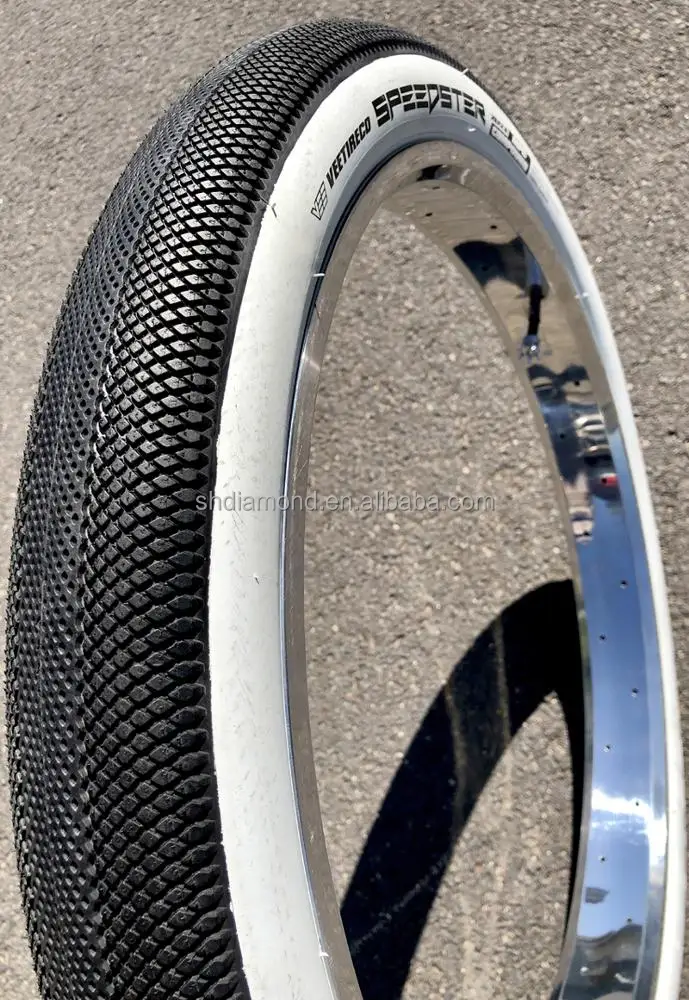
You can make a soft ottoman covered in fabric. To begin with, blanks are made from plywood sheet to close the holes. Then a foam strip is glued to the side of the tire around the entire circumference.
Using a screwdriver, screw the plywood disk from below. Next, they cover the tire with a dense cloth, fastening it with a construction stapler. Legs or wheels are screwed to the bottom plywood.
The remaining disc is wrapped with foam rubber and covered with fabric. The resulting cover is placed on top. It can be fixed with glue.
Several fabric-covered ottomans can be used to make a cozy seating area.
Two busbars are connected with bolts or screws from the inside. Next, the structure is painted or left as is.
A wooden circle made of MDF or chipboard is nailed on top, which is also painted, and soft bedding is laid. Also, a wooden circle can be covered with foam rubber and fabric.
An excellent set will be obtained from high poufs and a table. The table is made according to the same principle, only its height is twice as large. A casual white paint job while maintaining a contrasting black tread pattern gives the furniture a stylish look.
Wide tires with a small diameter are suitable for making designer boxes for handicrafts and storing small items. Their manufacture is similar to the creation of ottomans, only in addition to the outer skin, they also pay attention to the interior decoration.
For interior design, plain fabrics are used, and for external sheathing, bright fabrics with patterns and colors are used. Such cute interior items will be a good idea for a business.
Instead of simple pouffes, you can make chairs with a back and armrests. The backrest rail is also attached to bolts or self-tapping screws. Armrests can be made from strong, thick, varnished branches.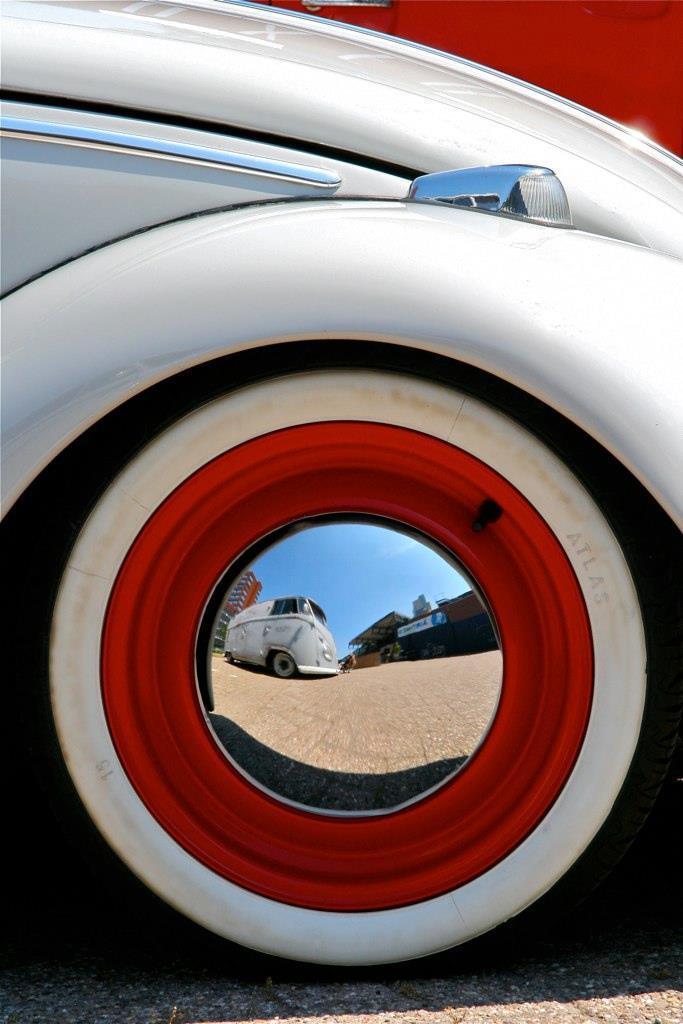 When the structure is assembled, proceed to close the holes in the center.
When the structure is assembled, proceed to close the holes in the center.
In addition to the methods already listed, weaving can be used. To do this, holes are made in a circle with a drill in increments of no more than 5 cm (more often). Later, a strong rope or cord is threaded through the holes with an awl, interlacing each longitudinal row with the transverse ones. You can experiment with the pattern, especially if you have weaving skills.
Bent steel tubes can be used as armrests. And for weaving instead of rope - soft wire.
You can make a bench out of single chairs by connecting two sections with a common wooden frame.
From tires and improvised materials, you can make spectacular designer furniture. Here are some proofs.
"Auto"-chair of 4 tires on a metal or wooden base. In the manufacture, the techniques already described above are used.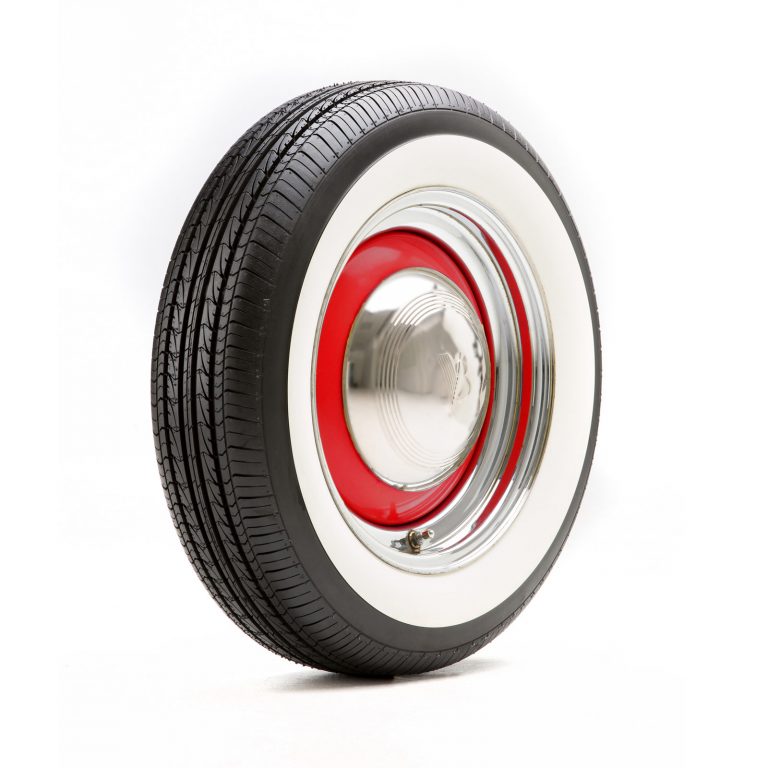 All elements are connected with bolts.
All elements are connected with bolts.
Low legged armchairs with upholstered backs in Art Nouveau style will perfectly fit into the interior of a spacious living room. For manufacturing, one tire is cut in half in diameter. This part will serve as the back.
A strip of thick foam rubber is glued inside. In order for the back to be beautifully raised, two slats-racks are nailed in the center.
For the seat, a wooden disk is cut out, sheathed with foam rubber. Then the entire foam rubber is covered with leatherette. Screw the back and seats and the chair is ready!
The next option is done in a similar way. Only for the back is taken a wide tire, which is attached closely, without rails.
For a chair with a high back, thick wooden slats will serve as a support, which are covered with a piece of foam rubber and covered with fabric. As a result, a brutal basis is not even guessed in the product. Everything looks elegant and stylish.
For the garden, an armchair with a wooden back is left unupholstered. Even without painting, it looks very aesthetically pleasing.
As a backrest, several tires connected to each other and placed on edge can be used. They can be attached to the tire serving as a seat using cables or elastic springs. Further tricks for converting waste material into a comfortable resting place can be suggested to you by fantasy or our good example.
Another interesting option for a chair for a private house made of a large tire. In this case, a segment is cut out in the tire, a soft seat is arranged below, and the inner walls are sheathed, and they serve as a back. A stylish combination of materials and a selection of trendy prints will allow you to get an excellent youth chair for watching TV.
Sofa requires car and mini truck tires. Solid tires are used for the base, and cut-off sectors for the back and sides.
Eco-leather or coarse wear-resistant fabric can be used as upholstery. Such a sofa can be placed in the garage or on the spacious terrace of a private house.
Such a sofa can be placed in the garage or on the spacious terrace of a private house.
Tires are also used to create an unusual coffee table. There are many ideas: on wheels, with or without legs, with a glass or wooden surface, painted or natural.
Gold-plated version with chrome-plated legs and glass top looks harmonious if it fits into the color background of the interior.
The version with wooden top and wenge legs is perfect for a classic style. The legs are screwed to the lower wooden disk, and the table top is fixed with hot glue.
The rail can also be used as a base for a round washbasin. Thus, you can equip a bathroom in a private house or an open washstand in the country.
The selected ideas demonstrate the wide range of applications of car tires in the creation of original home and garden furniture. Having mastered the basic principles, you can develop your project and surprise with new ideas.
Dacha, how many positive emotions are intertwined in this word. For a very large group of people, a suburban area is a place of creativity and relaxation of the soul. Therefore, they constantly harmonize the dacha space. However, not everyone, finances allow you to do this with the help of stores. Very many people use what is at hand, for example, for the manufacture of country furniture, an old, outdated automobile rubber is suitable.
Old tires have a fairly wide range of applications in the summer cottage, they produce all kinds of figures of animals, birds, flower beds look good from them. Tire tires also make excellent pieces of furniture, mainly:
But in order to bring all these objects to life, you will have to seriously work with your hands.
Tires can be used to make both simple and complex pieces of garden furniture.
There are a lot of options for furniture made from used tires. You can use ready-made sketches or make something of your own based on them, you just need to connect your imagination to this business.
What worthy use can be found for old tires? Usually they are simply thrown away or burned in baths. At the same time, few people think that car tires can be an excellent and durable frame for garden furniture. They are also used as interior items (office furniture, flower beds, elements of playgrounds, etc.). To do this, old tires should be treated to get rid of the smell of rubber. Such a decision is economically justified, because you will not only save yourself from buying new tables and chairs, but you will also be able to create your own business in this area.
Creating furniture and other household items from car tires is an interesting and creative activity for people who love and know how to make various interior elements with their own hands. If you look at this process from an economic point of view, then here its advantages are obvious, namely:
If you look at this process from an economic point of view, then here its advantages are obvious, namely:
Tire furniture picture:
Below are a few simple workshops, where you can learn the first skills and try to make your own models by looking at a step-by-step photo.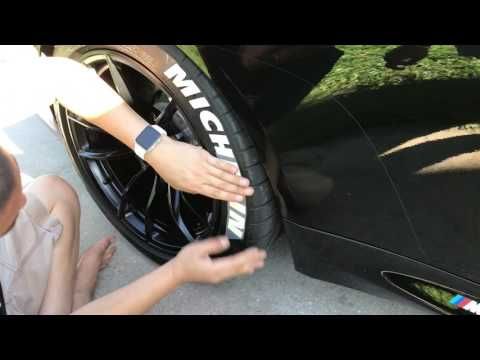
Before the very process of creating furniture, of course, tires must be pre-treated. To do this, they are washed, dried, treated with an alcohol solution or acetone solution. If you want to give the car tire a certain color, then it is better to use acrylic, alkyd or specialized paint (for rubber). There are many ways to create furniture from car tires. Here are some instructions for putting theory into practice:
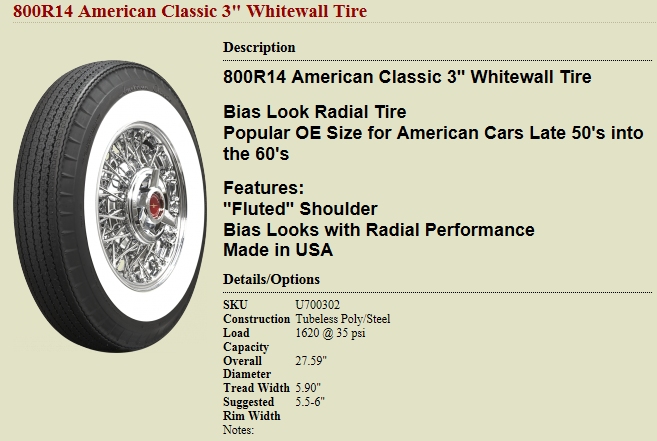
But this is just the "skeleton" of your furniture. You have to work hard on finishing to give the product a final look. You can make soft upholstery, a braided rope cover, or a removable fabric cover. It all depends on your imagination. The surface of the table can be decorated with a pattern or a decorative plastic sheet can be attached. So the design will acquire a finished presentation.
Do-it-yourself tire furniture master class:
It is extremely difficult to assess the profitability of this undertaking. It all depends on the quality and appearance of the finished product, as well as the ability to organize a sales market. The absence of competition and complete freedom in this area does not imply the presence of any average market price for the goods.
The absence of competition and complete freedom in this area does not imply the presence of any average market price for the goods.
Potential buyers in the initial stages may be your neighbors and acquaintances. In the future, you can offer your services to shops specializing in the sale of unusual and creative furniture for houses and gardens.
Do-it-yourself furniture from old tires:
With a well-established sales of goods, the benefits of such a business are beyond doubt. The absence of rent, the availability and cheapness of raw materials, as well as the speed of manufacturing the finished product, will quickly pay for the cost of tools and contingencies.
Dacha is an ideal place where the most unique and popular design ideas are born, not only for the backyard, but also for furniture. Of course, you can not waste time on crafts and buy furniture in special stores, or in a furniture showroom. But such furniture will no longer be original. Today we invite you to consider ideas on how to create a chair from tires or even a whole set of comfortable furniture from improvised material.
Today we invite you to consider ideas on how to create a chair from tires or even a whole set of comfortable furniture from improvised material.
In the previous article, we talked about how to make an artificial reservoir from a tractor tire. Many people throw away old used slopes, but you can create the most incredible things from them. A tire chair and a table are a very convenient option, and if you dream up a little, it will become a real source of your pride.
This is such a nice pouffe that you can create with a minimum of time and money. The main thing is a little patience. If you make several of these ottomans, they will become an excellent part of the interior decor of your veranda.
This table is perfect for morning coffee or tea in the fresh air.
By spending some money to buy twine, you can decorate a chair out of tires and other items made from them with twine. Such a set will look very stylish and rich in the interior of your country house, giving it more comfort and warmth.